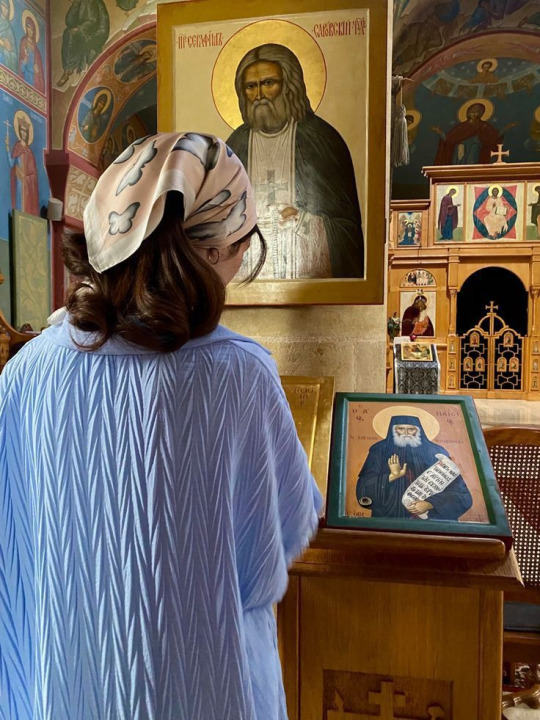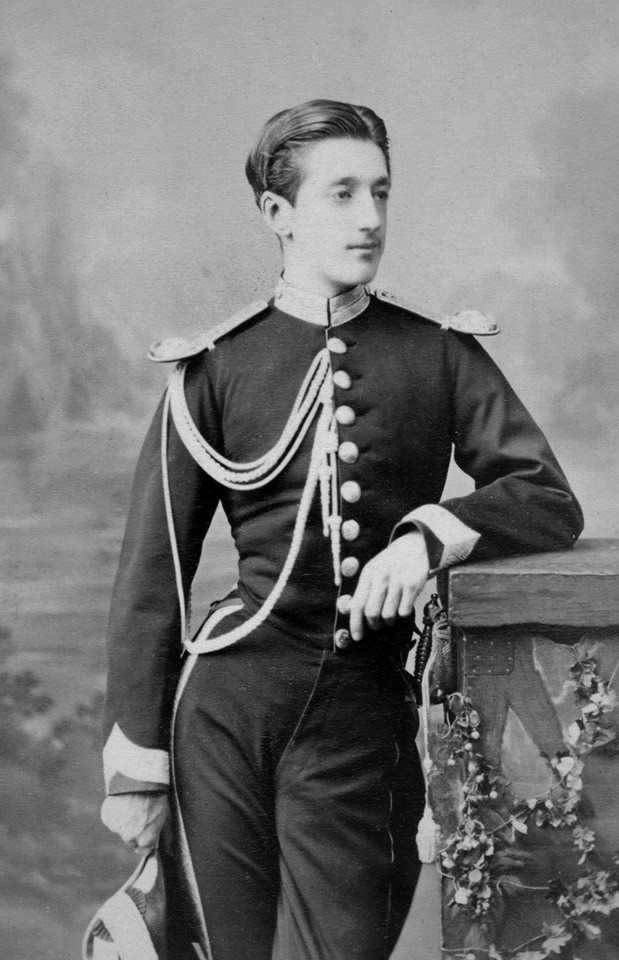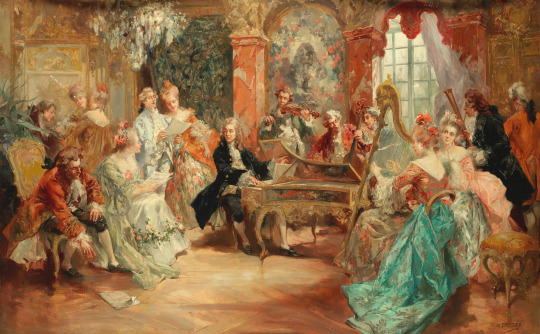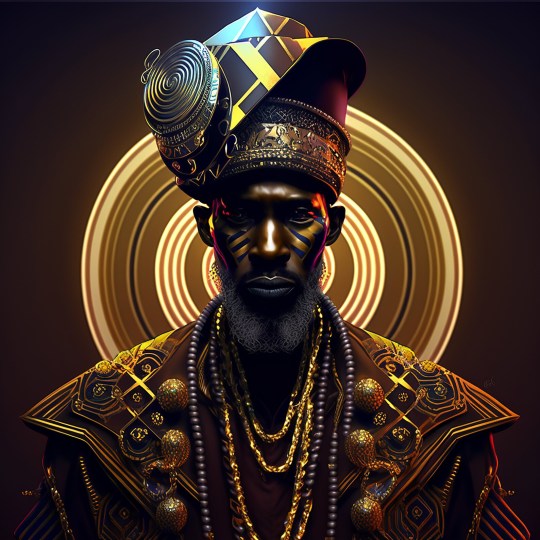#Spanish Aristocracy
Explore tagged Tumblr posts
Text

TIARA ALERT: Victoria Matossián y Márquez wore Queen Isabella II of Spain's Emerald Floral Tiara for her wedding to Prince Cecil of Croÿ at the Church of St. Peter the Martyr in Madrid, Spain on 22 March 2025.
#Tiara Alert#Victoria Matossian y Marquez#Spain#Spanish Nobility#Spanish Aristocracy#tiara#diadem#jewelry#floral tiara#emerald#bridal tiara#royal jewels
82 notes
·
View notes
Text

Empress Eugenie by Claude Marie Dubufe.
#claude marie dubufe#french empire#empire français#empress eugenie#condesa de teba#spanish aristocracy#dynastie bonaparte#bonaparte#buonaparte#maison bonaparte
21 notes
·
View notes
Text
Princess Leonor of Spain ❤ - Leonor de Todos los Santos de Borbón y Ortiz
#Princess Leonor of Spain#leonor of spain#princess leonor#nice#royal#royal family#spanish nobility#Spanish aristocracy
7 notes
·
View notes
Text

Eugénie, Empress of the French. By Sir William Ross.
#french empire#bonaparte#empire français#buonaparte#spanish aristocracy#eugenia de montijo#empress of the french#condesa de teba#maison bonaparte#dynastie bonaparte#william ross#sir william ross#art#portrait#royalty
6 notes
·
View notes
Text


Walburga Tiana Esperanza "Hope"
#walburga black#t.a.b.#tiana adara lupin black#hope lupin#wolfstar daughter#hogwarts#fanfic#polska#wattpad#marauders#wolfstar#slytherin#spanish woman#granddaughter#grandmother#death eaters#noble and most ancient house of black#remus lupin mother#sirius black mother#purebloods#pureblood aristocracy#Spotify
6 notes
·
View notes
Text
“I can’t believe Queen Mary was so awful to the Protestants. She deserves her nickname Bloody Mary.”
“Well first off, she was a Spanish descended Catholic with power in the Middle Ages so that is a given, but let’s put some context behind it too. Her mother was ousted as monarch due to the king deciding to become Protestant to marry Anne Boleyn, whose family was awful to Mary and from what I saw, basically trated her like Cinderella without the family lightheartedness Disney gave it to make that part palatable. Then her grandparents were Isabella and Ferdinand of Spain. You know of Reconquista and Columbus fame (let’s be honest Ferdinand was a joke and Isabella was the actual ruler, but freaking Torquemada), so in terms of religious persecution and mass murder she was quite tame.
#queen Mary#Bloody Mary#I’m not condoning it at all#but seriously a medieval Spanish catholic killing Protestants is about as blasé a history#as French aristocracy screws over the power#and the Holy Roman Empire doesn’t know what it owns
3 notes
·
View notes
Text
Headcanons for a³'s coven of chaos, part 6, Lilia's history edition:
(previous part of headcanons, here.)

Lilia wasn't born into sicilian aristocracy. She was born in the carpathian mountains. Her parents were romani, victims of persecution, and so she was orphaned & taken in by her maestra.
As a little girl, Lilia was insanely self-conscious, shy and withdrawn.
She used to have a pet goat. Hence my username. Now, she's upset that it's become some sort of satanic-associated stereotype that witches talk to goats.
When she started showing signs of her forgetfulness, her visions, her flashes—people will have treated her as 'defective' and 'faulty.' One of those kids that just 'isn't very bright.'
She hated the texture of those darn dresses. Her Maestra eventually noticed her discomfort and passed down the shirt and coat we see her wear on the road—since the costume designer said they were indeed passed down to her.
Her maestra taught her how to sew, knit—and a great deal of sicilian, Italian and greek recipes. Her maestra enjoyed cooking, and she enjoyed drinking tea.
Her maestra also taught her a little pan flute. It was many years kater that she studied the zills by herself. She had a lot of free time as a hermit, okay?
She'd get easily distracted, she wouldn't pay attention when others spoke. She'd struggle with eye-contact. Her voice would trail off. Once in a while, she'd get really excited about something and go on a long rant, until breathless—which would be met with judgement. She'd space out and others would laugh at her.
But despite the fact she was considered strange, even by her sister witches—her covenmates did love her. Like you live siblings even as you tease them—and she was one of the youngest, if not the youngest.
The maestra was undoubtedly a strict, no-nonsense woman. But she was also the first, perhaps the only person, who sat down to understand Lilia's unique condition. Whenever she'd catch her 'visiting,' which was often, she would focus on guiding & keeping her calm.
She was desperate to toughen Lilia up, seeing how afraid and insecure she was. The maestra worried for her and didn't want her to end uo helpless. So, she taught her everything she knows—like a mother—even if everyone else thought she was wasting time, since Lilia struggled a lot initially. (“tea-leaves, i was bad at tea-leaves...”)
Lilia's Maestra had known about the fever that will wipe out their coven since before little Lilia hot the vision—since on their first lesson, 450 year old Lilia time-slipping from the Witch's Road told her. Despite this, the maestra didn't tell Lilia, because having seen how dark and sad her future is, she wanted her to feel safe and happy for a little while longer.
The first time Lilia met Jen (and afterwards, the rest of them) was exactly then. As adult Lilia was talking to her maestra, little Lilia was in the tunnels, experiencing her life out of sequence as she always had. She simply couldn't remember the flashes of her future coven or make sense of anything.
Lilia tried to warn everyone of the fever despite the fact it was set in stone, because of her own denial. None of her covenmates believed her—'Looney Lilia is at it again'—but her maestra, who already knew it would happen, simply repeated that death comes for us all.
Lilia would see Rio all the time in her full-skull form when she was young, in flashes. Rio's been following her! She thinks they're besties! Lilia is scared shitless!
Lilia's first girlfriend was one of the Doñas de fuera. In the historical folklore of Sicily, Doñas de fuera (Spanish for "Ladies from the Outside"; Sicily was under Spanish rule at the time) were supernatural female beings comparable to the fairies of English folklore. In the 16th to mid-17th centuries, the doñas de fuera also played a role in the witch trials in Sicily. In historical Sicilian folklore, the doñas de fuera} would make contact with humans, mostly women deemed to have “sweet blood”, whom they took to Benevento ("the Blockula of Sicily"), by mounting them on magical, flying goats.
Compared to surrounding countries, the witch trials in Sicily were relatively mild: in most cases, the accused were either freed, sentenced to exile, or jailed, rather than sentenced to death.
In Lilia's case, after the death of her coven, when she was left alone, she was eventually put to trial and exiled from Sicily.
She traveled from medieval village to medieval village across Europe, chased with pitchforks each time. She thought every tragedy was her fault.
She was in Strasbourg, France, to witness the Dancing Plague. She tried to warn everyone, but they called her crazy.
Another old friend of Lilia's, while in France, was Carabosse, based on whom the wicked fairy/Maleficent was created. Lilia watched once more as she turned into a racist caricature after her death. MANY years later, she went and watched Tchaikovsky sleeping beauty ballet—and then proceeded to go and punch him also.
Heinrich Kramer tried to hit on her. If you don't know, he was a German churchman and inquisitor. With his widely distributed book Malleus Maleficarum, which describes witchcraft and endorses detailed processes for the extermination of witches, he was instrumental in establishing the period of witch trials in the early modern period. Professor Malcolm Gaskill has described Kramer as a "superstitious psychopath."
And Lilia, in fact, was good friends (potential fling??) with Helena Scheuberin, an Austrian woman who stood trial accused of witchcraft just because she herself had rejected Henrich Kramer's advances. During the trial, thirteen other people were accused. Lilia was one of them. Luckily, the trial was dismissed.
She stayed in Germany for a while, to live with her good friend (perhaps even girlfriend.) Aka, the witch from Hansel & Gretel. She watched her, later, be put to death in her own over—persecuted for witchcraft. And then, she watched again as her tale was combined with other medieval stereotypes and bastardized into an antisemitic stereotype that painted her as a cannibalist, child-stealing villain. Lilia hates it. She says it's a tale that celebrates the order of the patriarchal home, seen as a haven protected from the dangerous characters that threaten the lives of children outside, while it systematically denigrates the adult female characters, which are seemingly intertwined between each other.
She met Evanora Harkness when she was pregnant and deeply disliked her.

While in Germany, she was subjected to yet another witch trial. She survived, hasn't talked about how, but she has scars from it that she will not show. (Würzburg witch trials. The Würzburg witch trials of 1625–1631, which took place in the self-governing Catholic Prince-Bishopric of Würzburg in the Holy Roman Empire in present-day Germany, formed one of the biggest mass trials and mass executions ever seen in Europe, and one of the largest witch trials in history.)
After Germany, she went to England to escape that mess of trauma. And so she witnessed the Great Plague of London, lasting from 1665 to 1666, was the most recent major epidemic of the bubonic plague to occur in England.
She lived in Styria for quite a few years, where she dated Carmilla, from the lesbian vampire novel. Eventually, they broke up. Lilia had been empathetic at first, but grew tired of being fed off of and punched her.
Out of spite, she spent a decade or two in Transylvania, helping other vampires escape vampire hunting trials. She witnessed a lot of friends be killed.
She lived in Greece for a few years after the Greek War of Independence. Later spent time in Asia Minor, until she had enough of Greek and Turkish witches arguing about who coffee reading belongs to.
She became an opera singer in spain, for a while. One of the many jobs she took over the years. It's when she met Tchaikovsky, in a trip to russia, as mentioned earlier, and bitch-slapped that twink into oblivion.
While in russia, she also met Alexandra Kollontai.
She met Rosa Luxemburg during the First World War. She also met Clara Zetkin.
She went to Argentina for a few years, met Virginia Bolten.
So, America it is... She wasn't happy about it. She went to Massachusetts, like a moth to the flame. Not Salem, no—Boston.
She was friends with Sylvia Plath. Maybe they even kissed a little!! Lilia tried to help her, but couldn't.
Her mental health was so terrible that she couldn't hold jobs for too long. She worked as a seamstress, as a stenographer, a governess, a maid.
She got married to a gay man, one time, for a few years, because people grew suspicious. He died.
She decided she deserved to be alone, because she was a bad omen. A jinx, a habringer of doom. She chose the life of the hermit.
She was at the Women’s Suffrage Parade in 1913 in Washington, D.C.
During the roaring 20's she became a jazz singer. She wasn't able to continue, because she was getting some really bad mental health episodes.
She had to sell a lot of her old sicilian jewellery and good dresses for money after the economy crashed on 1929. The Great depression made her... Greatly depressed.
She was unable to keep paying for a house and started traveling with a caravan. If she'd stayed in Boston at that time, perhaps she could have met Jen. She didn't.
She was attacked & robbed three separate times while in said caravan.
Obviously she's a polyglot, familiar with the language of every country she's lived in. But even as she forgets words and confuses details between languages, she never forgets anything about her native tongue. She hasn't been in Italy for centuries, but all her notes & personal writings are in Sicilian. She really misses speaking it and she feels like she can never truly, genuinely express herself in English.
Before whichever war, due to all the death she was predicting, she'd scream and cry like a banshee. It's one of the reasons she repressed her magic, put it away, ignored it.
She was in The March on Washington for Jobs and Freedom on 1963.
She was in the stonewall riots in 1969. She made some friends again, non witch folk.
She was also in Woodstock, again, in 1969.
She did activism during the AIDS crisis. She lost the friends she made.
At one point she got bored and got a history degree.
At another point she got bored and got a philosophy degree.
She's taught in schools, once or twice, but was deemed unfit after a few years even though the students loved her.
She moved to New Jersey, opened Madame Calderu's Psychic Readings and Lilia's Leggings, but the money from that is still not enough. I mean, her house is decomposing, her bed is her wall, and her food is scarce enough that she doesn't mind a lapsed expiration date. Girl is dirt poor.
She does a lot of children's parties. She often hates the parents, though.
She has very few clients on the daily, but one of her regulars (in both businesses) is Madisynn King from She-Hulk.

#agatha all along#agatha all along headcanons#lilia's leggings#lilia calderu#patti lupone#agatha harkness#rio vidal#jennifer kale#agathario#billy maximoff#alice wu gulliver#agatha x rio
81 notes
·
View notes
Text
The "Mantilla" is not Reverent, not Traditional, and not Catholic. It isn't Even a Veil.
The mantilla, a lacy, sometimes sparkly, transparent, half-circle or triangle-shaped garment, is often lauded as a traditional, reverent, catholic piece of church clothing, but it is none of the above. The mantilla is the long-lived fashion of the secular Spanish aristocracy, and until recently, was exclusive to those regions under Spanish influence and colonialism (absoloutly not universal or catholic). They were worn by women who didn't want to cover their pretty Catalan locks-- as good a reason as any to manipulate the traditions of the Church.
For a time, mantillas were even banned in the New World, and women wearing them would be denied communion. Why? Because the mantilla is not a veil. It's transparent-- in no way does it cover a woman's hair in the way Saint Paul described in Corinthians. He writes, "every woman who prays or prophesies with her head uncovered dishonors her head, for that is one and the same as if her head were shaved. For if a woman is not covered, let her also be shorn. But if it is shameful for a woman to be shorn or shaved, let her be covered." Women's heads and hair should be covered-- not adorned with glittering table coasters.

Fully ridiculous. Look me straight in the eyeballs and tell me this is what St. Paul had in mind when he told women to cover their heads. Be serious.
Though in Christianity, women do not veil out of any kind of modesty (or 'modesty'), the mantilla is immodest as it makes the practice of veiling into a fashion statement, which is what the mantilla always was since its very invention. It is not merely fashion (picking out a veil in a color that matches your outfit), but fashion meant to skirt the actual requirements of the church-- that is, a real, opaque veil that resembles something the historical church would've worn from the days of Pentecost to any time before the so-called Enlightenment. It would be better to wear no head covering of any kind or to simply braid your hair, than to engage in a practice of obstinate adornment. This is not my opinion as an Orthodox Christian (where proper veiling is more common but still not universal)-- it is the opinion of the historical Christian Church until about five seconds ago.
There is debate among Christians who study this teaching about whether Paul's words imply that the entirety of the hair (with the possible exception of bangs) should be covered, or if he means more specifically the head itself (allowing the length of the hair to hang out of the back of a veil). I do not feel strongly either way (in a theological sense) so long as the material is opaque and actually covers at least the area of the skull. That is the bare minimum of what Saint Paul writes.
Here are some examples of proper veils in a church environment:

I find this very pretty, but all I can think about is the satin slipping for all of the Divine Liturgy. I always have to clip and pin and have it tightly fastened before the curve of my skull.

Probably do not bring the sheep into the Church building.





The infatuation with mantillas in the non-Spanish/Latin world began, as far as I can surmise, piecemeal in the late 1800s, picking up to an almost universal practice after Vatican II. This is to say, now, when Roman Catholic women veil, they almost always wear a mantilla. Before the 60s, European and white American RC women mostly wore hats as their form of head covering, which are their own issue, mostly related to fashion and insufficient coverage. Is a "pillbox hat" really a head covering Saint Paul would find acceptable? But at least they're opaque, right? Well, I should pick my battles.

I believe the reason the mantilla is particularly popular among young Roman Catholic women is due to the way RC influencers and 'gurus' talk about the purpose of veiling.
The actual purpose of veiling is to submit to the commands of God as recorded by Saint Paul. This following of a commandment allows you to be properly reverent and to be in communion with the historical practices of the church, past, present, and future. It's a simple reason, not very wild, controversial, or entertaining. That's the problem for RC lady influencers-- there are only so many ways you can quote the letters to the Corinthians.
So, these women feel the need to make up other reasons to veil, all of which range from tangential, to irrelevant, to heretical. Here are some doozies:
To Imitate Mary
Now, we do many things to imitate Mary-- notably, repeating her Magnificat. But Mary did not invent veiling. Veiling is a near-universal cultural practice, performed for many reasons. Of course, Mary rightfully and righteously participated in the veiling of Christianity, but she is not the reason why we veil (or ought to).

Notice how she covers herself?
2. To 'Express your Femininity'
Kill me now. Ok, it is fine and good if veiling makes you feel feminine or gets you more in touch with your femininity. That is a blessing. I know I never feel more beautiful than when I'm veiling, but this is not a reason we veil! Veiling is not about our internal feelings; it's about following a commandment.

Ohh yeah this is definitely Apostolic.
3. For Modesty
We've been over this one. Stop confusing Christianity with Muhammad's movement. Seriously, can we find a middle ground between imitating degenerate secular aristocracy and the false prophet's wives? At this point, I'm begging you.

4. To Show the Beauty of the Church
I am so sorry for you if you do not see the genuine beauty in the proper, traditional veiling of the Church. I don't know what else to tell you than that there is no tradition of the church that exists merely for your aesthetic entertainment. No statue carved nor icon writ, no paint spilled nor incense burned, no note sung, no vestment sewn has ever, ever been done merely because it is pretty. I understand the inclination to aesthetically prefer glittering lace that may dance in chapel light over a flat Pashmina or Pavlovsky Posad. However, I find it mind-boggling that this would seem a sufficient reason to abandon what the Scriptures actually demand. This is just as ridiculous as it would be to apostatize to Hinduism because you find their temples more visually appealing. You know what else is very sparkly and pretty? The Imam Ali Shrine in Iraq. Dazzling. But that does not make it part of the Christian Church. You must have the willpower and discernment to place what the Church demands above your personal fancies.
Women are so confused about veiling and the reasons why we must do it, is because veiling is no longer "simply what we do," as it has been both culturally and religiously until very recently. It is now, among RCs, an issue of controversy, somehow requiring justifications and auxiliary reasonings. It is not enough that Scripture demands it, the Church teaches it, and Her saints keep it-- there must be all these other reasons. This degradation of the veil began with things like the mantilla in Spain, the mesh bonnet and literal doyllie in Northern France and England, and other global innovations upon and rejections of the veil. We, as a Church, do not go from the wimple, to the mantilla, to a naked head over a few extremely progressive evenings. It was incremental, and participation in the mantilla only pushes us farther down the path of innovation.

If beauty is a real concern of yours, and no judgment if it is --the woman's heart years for beauty in a special and important way-- I think you'll find that the traditional veil allows just as much beauty and personal touch as the mantilla, if not much much more. Experimenting with veil styles is a small hobby of mine, and I feel accomplished when I can get the fabric to lay just right. My personal favorite is what I call the "cat ear" style, where there are two little peaks of fabric on the top of the head. Adorable.
Free yourself from mantilla mind slavery.
#veil#veiling#christian veiling#orthodox veiling#catholic veiling#christianity#orthodox#eastern orthodoxy#greek orthodox#orthodox christian#christian blog#russian orthodox#orthodox christianity#orthodoxy#catholic#mantilla#headcovering#head covering#head-covering#modesty#christian modesty#orthodox modesty#catholic modesty#catholicism#cathedral#roman catholic#catholic art#eastern catholic#modest girl#modest fashion
60 notes
·
View notes
Text
SABBATH X SECRET ORGANIZATION?!
Alright I can't be the only one who thinks Sabbath is deeply connected to secret organization and I'm talking about Wooin Yoo and Hyuk Kwon specifically. I'll talk about Wooin Yoo mostly because he's more suspicious than Hyuk, at least to me.
So do ya'll remember how Wooin's house looked like? It was built in aristocratic and classic western architecture with Victorian and expensive interiors. This type of architecture isn't common anymore, especially in Korea. Take it as an example on how other rich characters like Sangho, Minu, Dom, Jay, Shelly and etc don't have this type of house but just expensive houses that are pretty common in Korea. The secret organization's architecture is exactly same.



Antique clock that is strongly associated with old European or Victorian interiors. Symbolically, clocks like this symbolizes tradition and legacy. The walls appear to be covered in dark wood or wood paneling, giving a heavy, formal atmosphere.This kind of paneling is often found in aristocratic Western mansions, private gentlemen’s clubs, or very old-money estates.The matching wooden furniture (like the couch’s frame or side tables) suggests everything was curated as part of a cohesive, old-fashioned set. While the pictures don’t explicitly show the entire ceiling height, the proportions (especially the tall walls and the clock’s placement) imply a room designed for grandeur.High ceilings are typical of European manors or classic Western architecture, further emphasizing an old, inherited estate vibe. The lighting is moody and not overly bright—adding to a serious, almost secretive ambiance.This is consistent with a setting that prioritizes privacy and intimidation over warmth. The seating in both images (though partially shown) looks substantial, possibly tufted leather or thick fabric—common in English Victorian or Edwardian styled rooms.It adds to the sense of old-world wealth and understated luxury.Both images lack obvious family photos, modern electronics, or personal knickknacks.This absence of homely details suggests a formal, almost institutional environment—like a private office or parlor used for serious business rather than casual living.
Traditional Korean houses (hanok) or even modern Korean apartments don’t typically feature such heavy, Western-inspired wood paneling and antique décor. This distinct aesthetic implies the owner/family has ties to foreign aristocracy, old money, or long-standing generational wealth that deliberately chose a European design.The presence of an antique clock, dark wood, and European interior details often signals a mansion passed down through generations, or at least built to replicate that style.The occupant is likely from a family of significant power, possibly with connections abroad.
Mind you, this isn't even Wooin's room in the picture but a room he was locked up in and also the place he was staying in. Meaning, he wasn't using it as a place to live in at least from what we know and same applies to faceless man. It's just strange "coincidence", isn't it?
Also notice that faceless man's, Hyuk's and Wooin's mindset is similar? Especially Hyuk's and faceless man's. Let me explain. When Kazuma was killed and faceless man got confronted about it, I think in s4 ch79-80, faceless man says "This is the price he pays for insulting my game." which means that he basically thinks of ruining cycling as a sport with gambling and doping (and probably even more crimes) and harming others as a game. He finds it entertaining. Even when Jay and Kaneshiro raced against each other, faceless man says how it was entertaining but pays most attention to Jay while saying that in s4 ch81. And in chapter 529, faceless man watches the race and says "How amusing/this is fun" in Spanish. Game, amusement, fun...All these are engraved in Hyuk's and Wooin's mindsets.
Hyuk is chapter 536-537: "Yes, you should at least be like that to make it fun."
Hyuk in chapter 538: "Breaking things at their most exciting and valuable moment...That's the real thrill. Not the boring victory you all dream of." "Thanks to you, it's been fun."
Wooin Yoo in s3 ch34: "You think I'm doing this for money? It's just fun! Seeing each team getting eliminated according to the scenario and seeing them all fucked up...It gets me excited."
Wooin in ch.137/s2, ep71: "I'm not sure what's going on but this seems fun."
Faceless man in s4, ch79-80: "That's the price he pays for insulting my game."
Faceless man in s4, ep81: "It's too early to compare that kid to HIM, but entertaining? It is."
Faceless man in chapter 529: "This seems fun/How amusing."
Three of them seem to think that causing harm to others and messing things up is fun, just a part of their game to entertain themselves. Sure, they're not the only sadistic characters we have seen but they're the only ones with this mindset. Even Juwon's mindset is different since he's not doing all that shit for fun but because it makes him feel like God.



Also in chapter 535, secret organization's men tell nameless woman that League of Streets winner is team Sabbath before the race was even halfway done. But this seems more suspicious after remembering what Wooin said in s2 ch. 124: "The winner of this competition has already been decided. All we have to do is sit back and enjoy ourselves." How strange. The winner of League of Streets have been decided from the very beginning which means that this competition was never about cycling and winning, it's just an excuse for something even bigger and Wooin, again, confirms that in chapter 197 when he tells Sabbath, Hyuk included: "You guys don't know what this competition is really about."


It's even more suspicious that Wooin indicates that he knows much more than Hyuk, of all people. Everyone in the fandom suspects Hyuk to be related to secret organization and holds much more information than anyone but somehow, Wooin is much more informed than Hyuk? HOW IS THAT NOT SUSPICIOUS especially considering that Sangho clearly hasn't informed Wooin about everything, like Wooin found out along with rest of LoS that Jay was Mahon's nephew, Wooin didn't know what was happening with all these drugs in s2 ch.71 but somehow, he caught up suspiciously fast. Considering the fact that Wooin is smart and cunning, I'm not surprised but even smart characters like Minu and Jay needed almost entire four seasons to find out that there was more to this tournament than cycling and entertainment yet Wooin already figured that out in one season.
Tag list: @feelsclear @shintaru @erisawrites
#windbreaker manhwa#windbreaker webtoon#sabbath crew#wooin windbreaker#hyuk kwon#wooin yoo#jay jo#yoo wooin
16 notes
·
View notes
Text

Valiant Ladies by Melissa Grey
By day Eustaquia “Kiki” de Sonza and Ana Lezama de Urinza are proper young seventeeth century ladies. But when night falls, they trade in their silks and lace for swords and muskets, venturing out into the vibrant, bustling, crime-ridden streets of Potosí, in the Spanish Empire's Viceroyalty of Peru. They pass their time fighting, gambling, and falling desperately in love with one another.
Then, on the night Kiki's engagement to the Viceroy's son is announced, her older brother―heir to her family’s fortune―is murdered. The girls immediately embark on a whirlwind investigation that takes them from the lowliest brothels of Potosí to the highest echelons of the Spanish aristocracy.
Genres: historical, fantasy, romance
Order from Blackwell's here and get free worldwide shipping!
Listen to the book on audiobooks.com here!
156 notes
·
View notes
Text

TIARA ALERT: Victoria López-Quesada y Borbón-Dos Sicilias wore the Habsburg Diamond Button Tiara for her wedding to Enrique Moreno de la Cova at the Soto Mozanaque Estate in Algete, Spain on 31 August 2024.
#Tiara Alert#Victoria Lopez Quesada#Bourbon Two Sicilies#Spain#Spanish Nobility#Spanish Aristocracy#tiara#button tiara#Fleur de lys#royal jewels#royaltyedit#bridal tiara
81 notes
·
View notes
Text

Carlos María Fitz-James Stuart, 16th Duke of Alba (1849-1901).
He was the nephew of Empress Eugénie de Montijo.
#spanish aristocracy#scottish dna#house of fitz james stuart#house of stewart#house of stuart#ducado de alba#duque de alba#monarquía española#aristocracia española#duke of alba
9 notes
·
View notes
Text

Princess Leonor of Spain ❤ Attend Princess of Asturias Awards 2024
#Princess Leonor of Spain#leonor of spain#princess leonor#nice#royal#royal family#spanish nobility#Spanish aristocracy
3 notes
·
View notes
Note
What real life countries do you use as inspiration for the fictional ones? I love all of them and it makes me so curious especially when you describe the food from each one it makes me drool
Mmmm, it's not an exact comparison... more that I take inspiration from certain elements of certain cultures.
That said:
Westerlin takes a lot from England generally, and Gallatin takes a lot from English and European finishing schools and US charm schools. Archambault takes some bits from schools like Eton. (And both are significantly less dystopian in various ways!) They have a lot of stiff-upper-lip and politeness values, and embedded pro-aristocracy, anti-social-mobility stuff that feels very English to me. Landscape wise, I drew from Swiss finishing schools for Gallatin and Archambault; the city of Fenburg takes some inspiration from London and various other English and European cities I've visited.
The Isle of Teteriuk takes some inspiration from the Isle of Skye, and the manor from some gothic mansions I've visited and seen photos of. The church is inspired by various photos I've seen of gothic Eastern European Catholic churches. Jezhan's situation on the whole takes some inspiration from what I've learned about various historical periods/places in which an established aristocracy was struggling and various industrial changes were happening.
The relationships between Westerlin and Zaledo feel to me similar to some European countries, where there's a lot of cross-pollination, culture-wise, but there's also a lot of bristling nationalism and long (though not overtly hostile) grudges.
Zaledo's climate/geography takes inspiration from a variety of Mediterranean countries. When I was thinking about the city of Merenil (not that it's described in a ton of detail) I thought about various Turkish and Spanish cities.
With Teran I felt inspired by some parts of US culture, in particular the prizing of hustle culture and exceptionalism, and being a relatively young governing system. The small-town culture of Elene's Prospect is drawn in some ways from some of my experiences growing up in a very small English village. I based the climate and landscape of Ozera and Elene's Prospect very broadly on southern California; a lot of the buildings in New Belmir City, though, are inspired by various buildings I've seen and visited in Italy and Spain towns and cities.
So in short, it's very much a mishmash of lots of different things!
25 notes
·
View notes
Text

Vicente García de Paredes (Spanish, 1845-1903) A recital of Handel, n.d.
#Vicente García de Paredes#George Frideric Handel#A recital of Handel#classical art#european art#spanish art#spanish#hispanic#latin#art#fine art#1800s#aristocrat#aristocracy#noble#nobility#court#fine arts#painting#classic art#handel#a european music recital#music recital
57 notes
·
View notes
Text

Babaaláwo or Babalawo in West Africa (Babalao in Caribbean and South American Spanish and Babalaô in Brazilian Portuguese) literally means "father of secrets" in the Yoruba language. It is a spiritual title that denotes a high priest of the Ifáoracle. Ifá is a divination system that represents the teachings of the ÒrìṣàỌrunmila, the Òrìṣà of Wisdom, who in turn serves as the oracular representative of Olodumare.

Functions in society
The Babalawos are believed to ascertain the future of their clients through communication with Ifá. This is done through the interpretation of either the patterns of the divining chain known as Opele, or the sacred palm nuts called Ikin, on the traditionally wooden divination tray called Opon Ifá.

In addition to this, some of them also perform divination services on behalf of the kings and paramount chiefs of the Yoruba people. These figures, holders of chieftaincy titles like Araba and Oluwo Ifa in their own right, are members of the recognised aristocracies of the various Yoruba traditional states.

People can visit Babalawos for spiritual consultations, which is known as Dafa. The religious system as a whole has been recognized by UNESCO as a “Masterpiece of the Oral and Intangible Heritage of Humanity."

#unesco#babalawo#dafa#yoruba#african#afrakan#africans#brownskin#afrakans#kemetic dreams#brown skin#african culture#afrakan spirituality#nigerian#ancestors#peace#metaphysics#araba#opele#ifa#ouwa#olodumare#orisa#orunmilla#orun#traditional african religion#west africa#yoruba language#father of wisdom#orisa of wisdom
121 notes
·
View notes